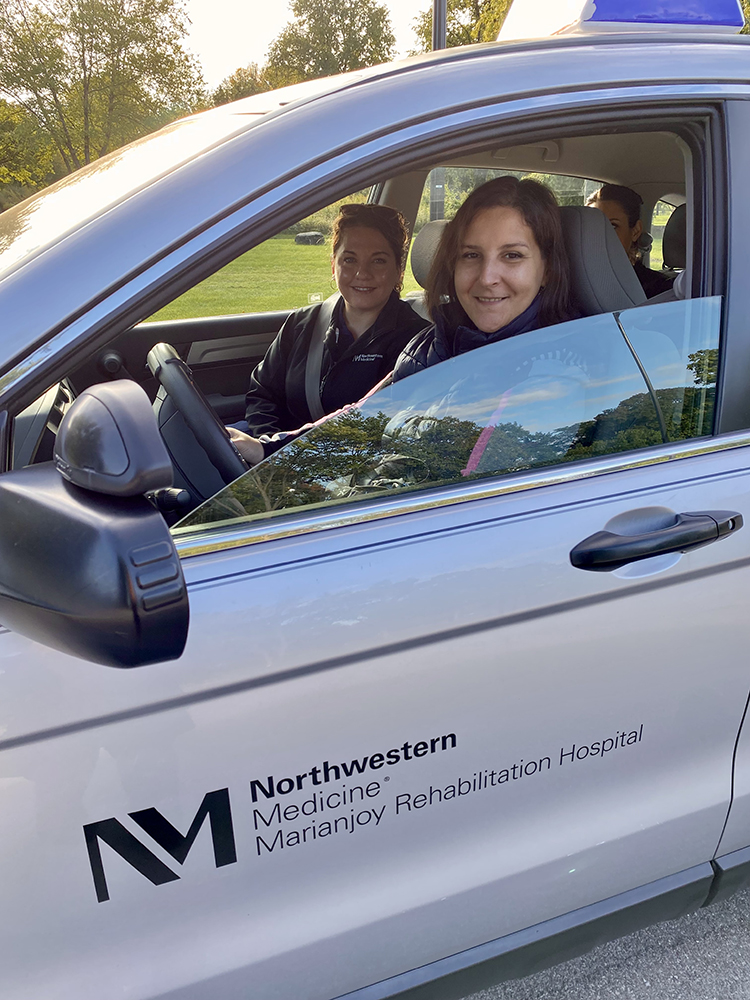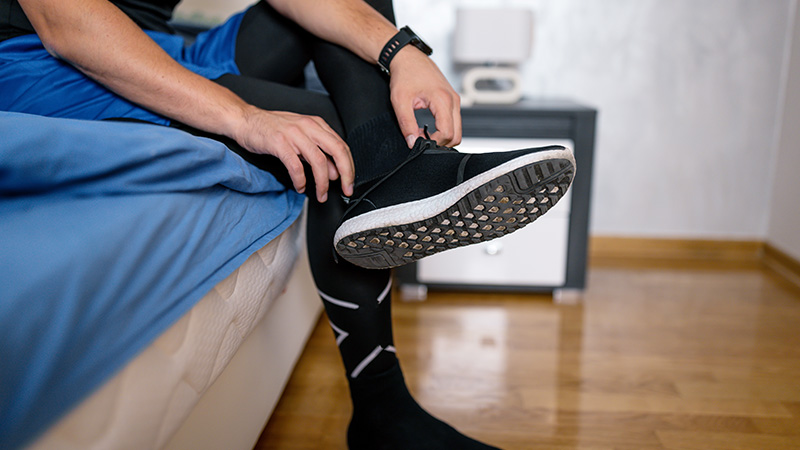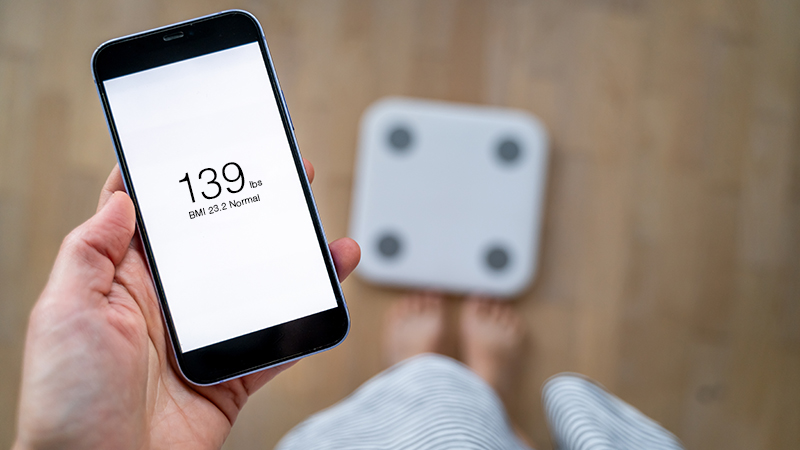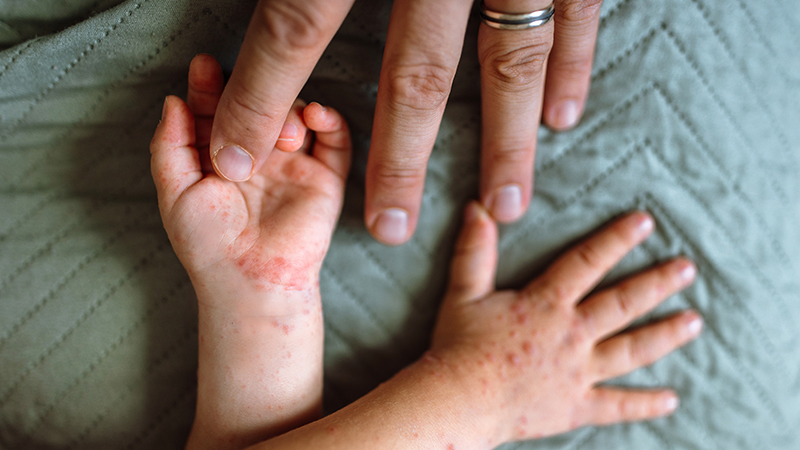Driver Rehabilitation Programs Pave the Way to Greater Mobility and Independence
A Road to Better Mobility for People With Disabilities
Published October 2023
Driving is more than just a means of transportation. It often represents freedom to go where you want, whenever you want. It's a big part of independence and daily life. For people with disabilities or who are recovering from injuries or major life events like a stroke, their independence can be limited or even seem unattainable.
Fortunately, driver rehabilitation programs can help people gain more mobility, independence and confidence.
The Nuts and Bolts of Driver Rehabilitation Programs
Driver rehabilitation programs offer specialized services to evaluate and train people with disabilities to drive safely. The key components of driver rehabilitation programs, including those at Northwestern Medicine Marianjoy Rehabilitation Hospital and Northwestern Medicine Outpatient Neuro-Rehabilitation Crystal Lake, include:
- Evaluation and assessment: Your journey will start when a driver rehabilitation specialist (typically an occupational therapist with advanced training), who is also certified as a driving instructor by Illinois, conducts a thorough assessment. They will evaluate your vision, perception, cognition and motor function.
Based on the assessment, your driver rehabilitation specialist will:
- Discuss recommendations for driving with you and, if appropriate, your loved ones.
- Address any questions about adaptive equipment, such as hand controls, steering devices, seat modifications and pedal extenders.
- Review any vehicle adjustments to accommodate your specific needs.
- Recommend restricted driving or alternative transportation, depending on your evaluation results.
At Northwestern Medicine, we will send a final evaluation report with recommendations to your referring physician or advanced practice provider to discuss with you.
- Behind-the-wheel training: The heart of driver rehabilitation lies in the practical training phase. This involves teaching you how to operate a vehicle safely while taking into account your unique needs. On-the-road training can include residential and highway driving, parking, and obeying signs, signals and markings.
- Cognitive and visual training: If you have cognitive or visual impairments, you may need specialized training to enhance your decision-making abilities, reaction time and hazard perception skills.
- Advocacy: Driver rehabilitation programs often include advocacy services. This can entail accompanying you to your state's official driving test or working with local vendors on your behalf to get adaptive equipment for your vehicle. Before starting a driver rehabilitation program, ask if advocacy services are available to you.
Who Can Benefit?
Driver rehabilitation is available for people with a wide range of disabilities, including:
- Physical disabilities, such as limb amputations, paralysis, dwarfism or neuropathy
- Sensory impairments like visual or hearing impairments that may require specialized training and equipment to compensate for sensory deficits while driving
- Cognitive and developmental disabilities, such as traumatic brain injuries or conditions like autism and attention deficit hyperactivity disorder (ADHD), which can require tailored strategies and support to ensure safe driving
Older drivers with declining physical and or cognitive abilities can also benefit from driver rehabilitation.
"We do a lot of evaluations at Marianjoy Rehabilitation Hospital and the Crystal Lake rehabilitation center with older drivers to ensure safety on the road," says Monica Scalise, OT, an occupational therapist at Marianjoy, driver rehabilitation specialist and certified driving instructor. "They are referred by their physician. Often times, it's a family member's concern that starts the process. It can be easier for a professional to talk about driving retirement than a family member."
Some driver rehabilitation programs, like the one at Marianjoy, also work with teens who have vision, cognitive or motor impairments.
"Marianjoy meets the state requirements for teen driver education and can coordinate services with a student's high school," says Scalise. "Students do all of their behind-the-wheel driver education at Marianjoy, similar to how they would receive instruction through a high school program."
Driving Change: Olena's Story
Olena Barabash came to the Marianjoy Driver Rehabilitation Program after experiencing a neurological deficit that impacted the coordination of both of her legs. Olena is from Ukraine and uses an interpreter provided through the program during each of her driving sessions.
"This has been the biggest challenge of my life," says Olena. "My legs are not following the commands of my brain."
Olena says she uses public transportation to get back and forth to work as an assembler, but admits it's been a struggle and is time consuming getting from point A to point B. "It won't be easy in the winter," she says. "I can't even think about that."
After starting the Marianjoy Driver Rehabilitation Program, Olena has taken advantage of other specialty programs offered by Marianjoy, including physical therapy, prosthetics and orthotics for her fitted ankle-foot orthoses, and wheelchair and positioning to determine the mobility device that enables her to be most independent. Olena's student driver car was outfitted with hand controls for the gas and brake pedals, as well as a spinner knob for steering.
"With our comprehensive services, we are able to address the specific rehabilitation needs of each of our participants," explains Scalise. "And the needs vary greatly based on health conditions and demographics."

with Northwestern Medicine Marianjoy Rehabilitation Hospital on the door.
Scalise says Olena has come a long way in just 11 sessions. She demonstrates improved vehicle control and can drive around the Marianjoy campus and surrounding neighborhoods in the student-driver car. She is working up to more complex environments.
Scalise and Olena work together more intensely on road signs, driver etiquette, right of ways and nonverbal communication between drivers and pedestrians since Olena is acclimating to U.S. culture and the English language.
"Only after I came here, I realized I can be an independent person. It has opened my potential to the maximum," says Olena. "Life will become way easier after I master driving and, God willing, am able to get my own vehicle."
If you or a loved one is facing driving challenges or has questions about safe driving or returning to driving, talk to your physician about a driver rehabilitation program. With the right training and support, greater driving independence may be within reach.





